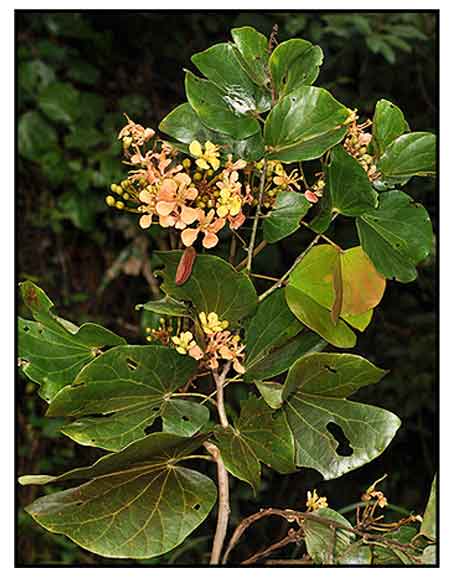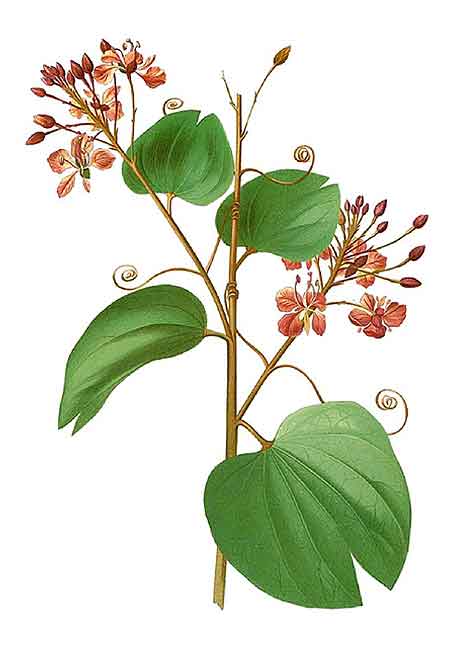
Family • Fabaceae
Banot
Phanera integrifolia (Roxb.) Benth.
FLAME VINE BAUHINIA
| Scientific names | Common names |
| Bauhinia integrifolia Roxb. | Agpoi (Tagalog) |
| Phanera integrifolia (Roxb.) Benth. | Banot (Tagalog) |
| Accepted Infraspecifics | Uplig (Ilokano) |
| Phanera integrifolia subsp. cumingiana (Benth.) de Wit | Flame vine bauhinia (Engl.) |
| Phanera integrifolia subsp. integrifolia | |
| Phanera integrifolia var. nymphaeifolia (G.Perkins) Mackinder & R.Clark | |
| Phanera integrifolia is an accepted species. KEW: Plants of the World Online | |
| There are conflicts on synonyms. Some compilations list Bauhinia integrifolia and B. cumingiana as synonyms, while others list B. integrifolia and Phanera integrifolia as synonyms. Some of the other synonyms applied are: Bauhinia holosericea Ridl. (1917), B. flammifera Ridl. (1920). | |
| Other vernacular names |
| MALAYSIA: Akar katup-katup; Ketup-ketup, Kekatup. |
| THAILAND: Ku-kuu kuu-do, Chongkho yaan, Yothakaa. |
March 2023
![]()
 |
| PHOTOS / ILLUSTRATIONS |
| IMAGE SOURCE: Photograph: Fabaceae: Phanera integrifolia subsp. cumingiana / Flowering vine / Copyright © 2017 by P B Pelser & J F Barcelona (contact: [email protected]) [ref. DOL121739] / Non-Commercial Use / click on image to go to source page / Phytoimages.siu.edu |
OTHER IMAGE SOURCE: Illustration: Phanera integrifolia / Francisco Manuel Blanco (OSA) / Flora de Filipinas / Public Domain / Wikimedia |
Additional
Sources and Suggested Readings |
α•(5) |
DOI: It is not uncommon for links on studies/sources to change. Copying and pasting the information on the search window or using the DOI (if available) will often redirect to the new link page. (Citing and Using a (DOI) Digital Object Identifier) |
| List of Understudied Philippine Medicinal Plants |
α•(5) |
 |
• |


 Properties
Properties